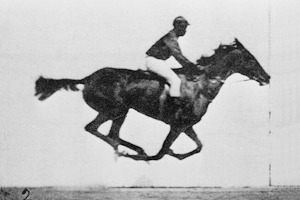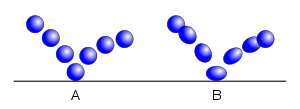Squash and stretch is the phrase used to describe "by far the most important"[1]:47 of the 12 basic principles of animation, described in the book The Illusion of Life by Frank Thomas and Ollie Johnston.
Basis

The principle is based on observation that only stiff objects remain inert during motion,[1]:47 while objects that are not stiff, although retaining overall volume, tend to change shape in an extent that depends on inertia and elasticity of the different parts of the moving object. To illustrate the principle, a half-filled flour sack dropped on the floor, or stretched out by its corners, was shown to be retaining its overall volume as determined by the object's Poisson's ratio.
Examples of the elasticity of the human body in motion were found in photographs the animators found in newspaper sports pages. Using these poses as reference the animators were able to start "observing (the motion) in a new way".[1]:48 Author Walt Stanchfield said, "A simple shape plus squash and stretch are all the anatomy you need for cartoon characters."[2]:84
Application
The ball that would change shape, compressing ("squash") as it hit the ground, then extending (stretch) as it bounced up again, was the most simple example that was part of the preparatory training for Disney animators.[1]:51
During the 1930s, the squash and stretch were exaggerated by Disney animators, making it ever more extreme, but they had to maintain the overall volume of an object so that it did not appear to change volume as well as shape.[1]:48
See also
- 12 basic principles of animation
- Anticipation (animation)
- Follow through and overlapping action
References
- ^ a b c d e Thomas, Frank; Ollie Johnston (1997) [1981]. The Illusion of Life: Disney Animation. Hyperion. pp. 47–69. ISBN 0-7868-6070-7. Retrieved November 12, 2018.
- ^ Stanchfield, Walt (2009). Drawn to Life: 20 Golden Years of Disney Master Classes. Focal Press. pp. 12–14. ISBN 9780240811079. OCLC 879274403. Retrieved November 12, 2018.
